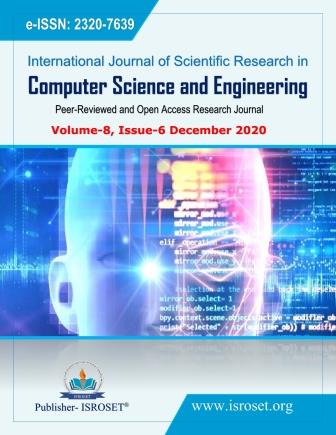Brain Computer Interface Based Robotic Car Using Raspberry Pi
Keywords:
Brain, Brain Computer Interface, Wheelchair, Eye Blink, Raspberry Pi, Bluetooth, Mind-wave mobile, Brain senseAbstract
In our society we will see that there are more individual who suffered from various diseases like paralysis in such situation they cannot talk and unfit to move from one place to another and at the same time they are not capable to communicate to other for their daily essential needs , but in such cases they can utilize their eyes for communication and sometimes their use their head to convey their messages. In this paper we shows that how our proposed methods which works under the principle of Brain Computer Interface. Our model gives confidence to those individual for controlling their wheelchair to the spot by just blinking of their eyes. By employing this method these individual need not to be more dependent on their guardian when they need of, and they can drive their wheelchair themselves. As soon as we start running the program, wheelchair begin to moves from their position and command is provided through the blinking of eyes.
References
S. S. Pujari, M. S. Patil, and S. S. Ingleshwar, “Remotely controlled autonomous robot using Android application”, 2017 IEEE International Conference on I-SMAC (IoT in Social, Mobile, Analytics, and Cloud) (I-SMAC), PP. 460-933,10 feb 2017.
M. R. Mishi, R. Bibi, and T. Ahsan, “Multiple motion control systems of the robotic car based on IoT to produce cloud service,” 2017 IEEE International Conference on Electrical, Computer and Communication Engineering (ECCE), 2017.
D. Chakraborty, K. Sharma, R. K. Roy, H. Singh, and T. Bezboruah, “Android application based monitoring and controlling of movement of a remotely controlled robotic car mounted with various sensors via Bluetooth,” 2016 IEEE International Conference on Advances in Electrical, Electronic and Systems Engineering (ICAEES), 2016.
S. J. Lee, J. Lim, G. Tewolde, and J. Kwon, “Autonomous tour guide robot by using ultrasonic range sensors and QR code recognition in an indoor environment,” IEEE International Conference on Electro/Information Technology, 2014.
E. Amareswar, G. S. S. K. Goud, K. R. Maheshwari, E. Akhil, S. Aashraya, and T. Naveen, “Multipurpose military service robot,” 2017 IEEE International Conference of Electronics, Communication, and Aerospace Technology (ICECA), 2017.
Premkumar, Keerthi, and K Gerard Joe Nigel. “Smart Phone-Based Robotic Arm Control Using Raspberry Pi, Android, and Wi-Fi.” IEEE International Conference on Innovations in Information, Embedded, and Communication Systems (ICIIECS), doi:10.1109/iciiecs. 2015.7192973, 2015.
Zain Anwar Ali , M. Tanveer, Habib Shaukat 2 and Saad Anwar , "Android Operated Robotic Arm", Universal Journal of Control and Automation, vol. 2, no. 1, pp. 13, 2014.
B.O. Omijeh, R. Uhunmwangho and M. Ehikhamenle. “Design Analysis of a Remote Controlled Pick and Place Robotic Vehicle”, International Journal of Engineering Research and Development, volume 10, 2014, pp. 57-68.
P. Ritika and K. Narender. “Android Mobile Phone Controlled Bluetooth Robot Using Microcontroller” International Journal of Scientific Engineering and Research (IJSER), Volume 2, Issue 7, , pp. 14-17. 2014
J. Bhuvaneshwari, A. Mohnish,, G. Rohan, B. Chetan. “Voice Controlled Robotic Vehicle”, International Research Journal of Engineering and Technology (IRJET), Volume 04, Issue 06 , pp. 191-193, 2017.
Downloads
Published
How to Cite
Issue
Section
License

This work is licensed under a Creative Commons Attribution 4.0 International License.
Authors contributing to this journal agree to publish their articles under the Creative Commons Attribution 4.0 International License, allowing third parties to share their work (copy, distribute, transmit) and to adapt it, under the condition that the authors are given credit and that in the event of reuse or distribution, the terms of this license are made clear.







